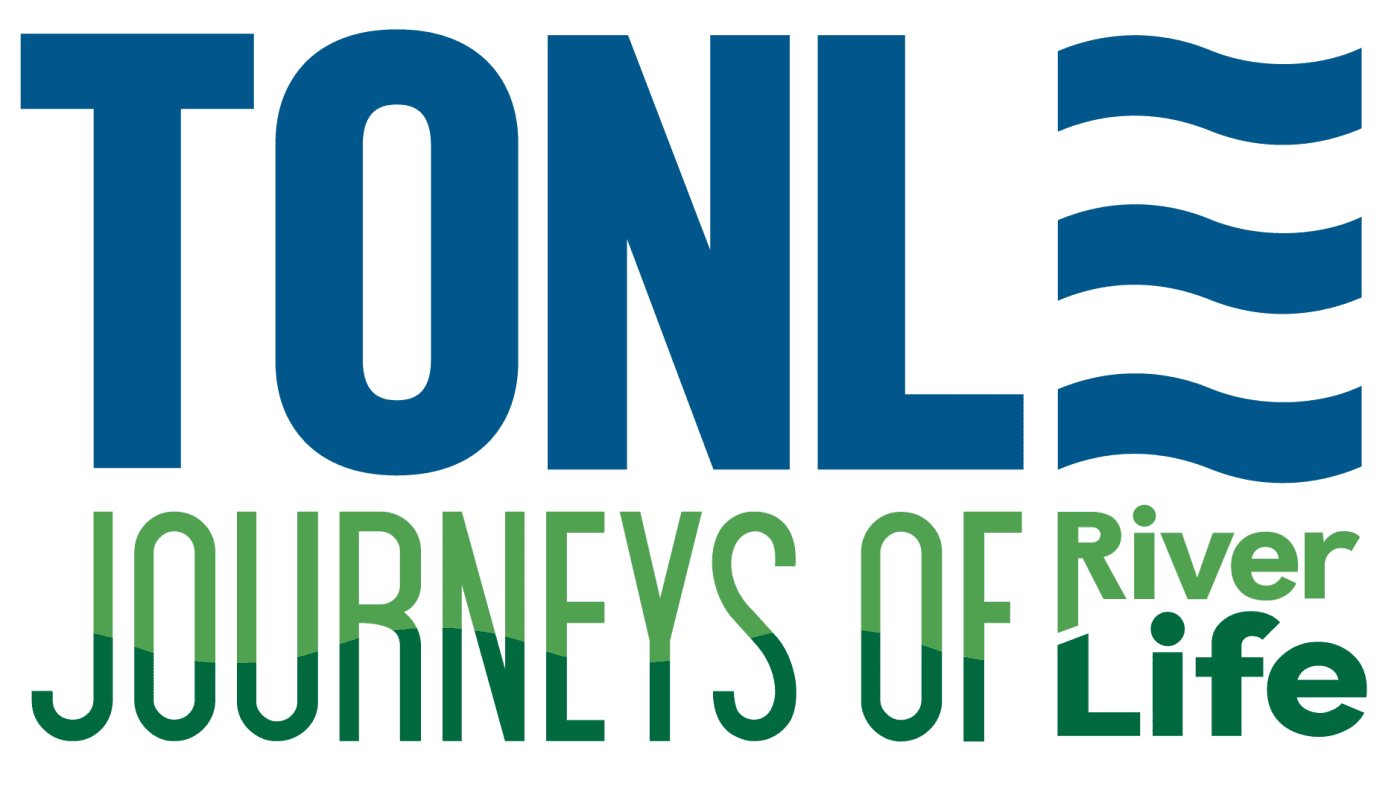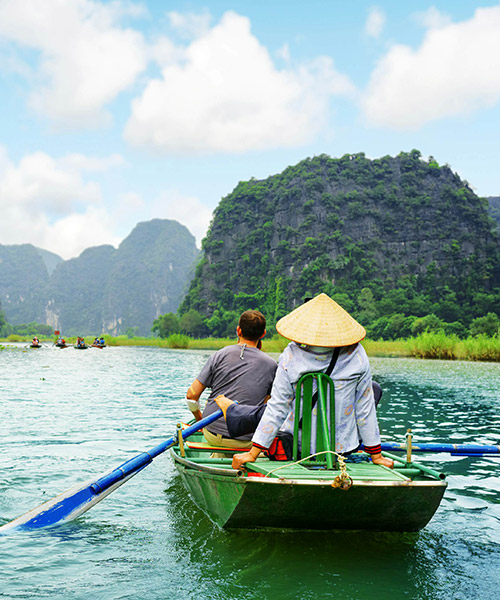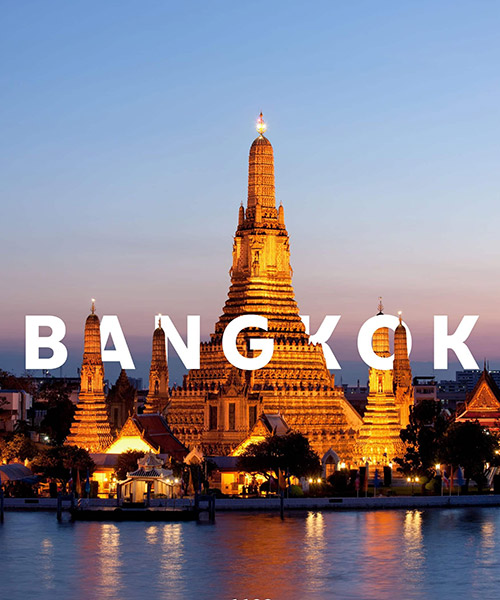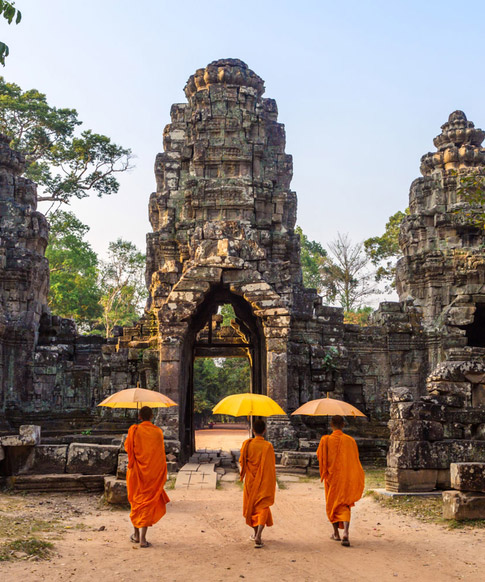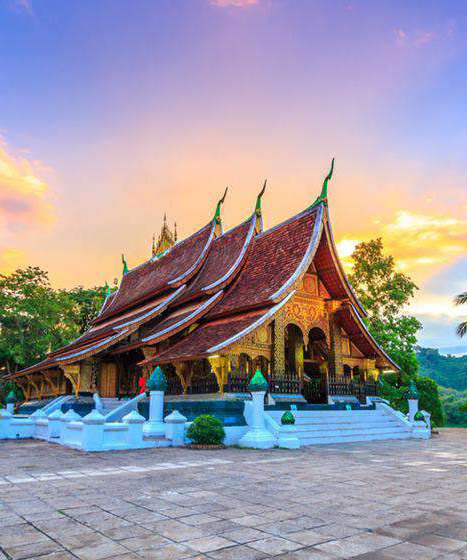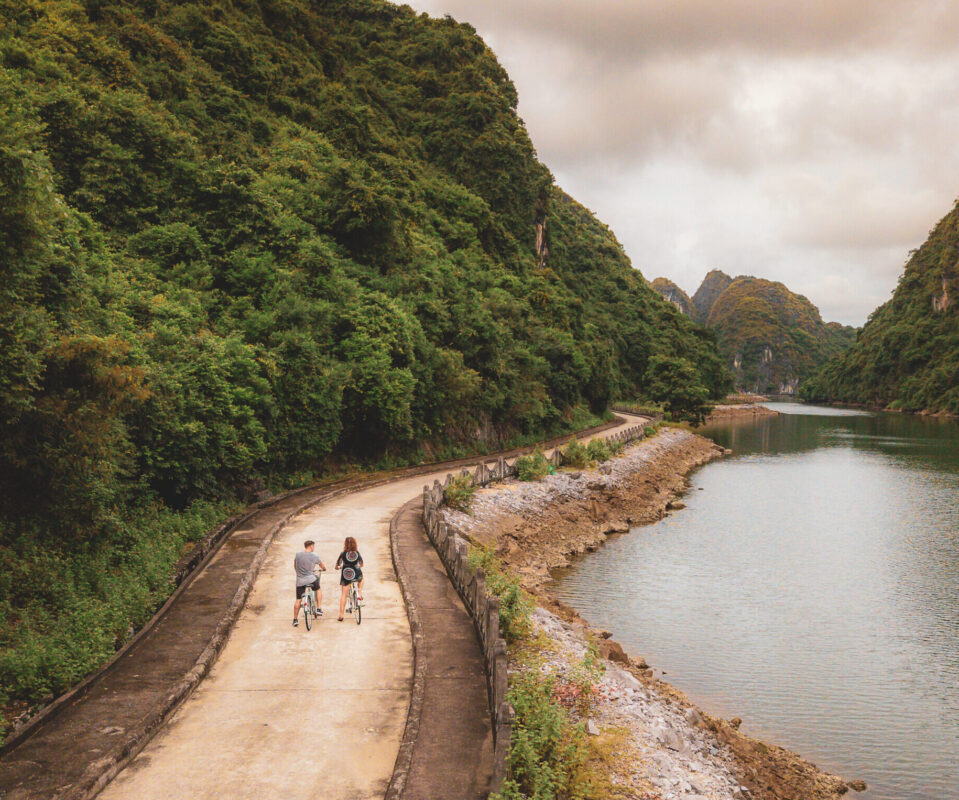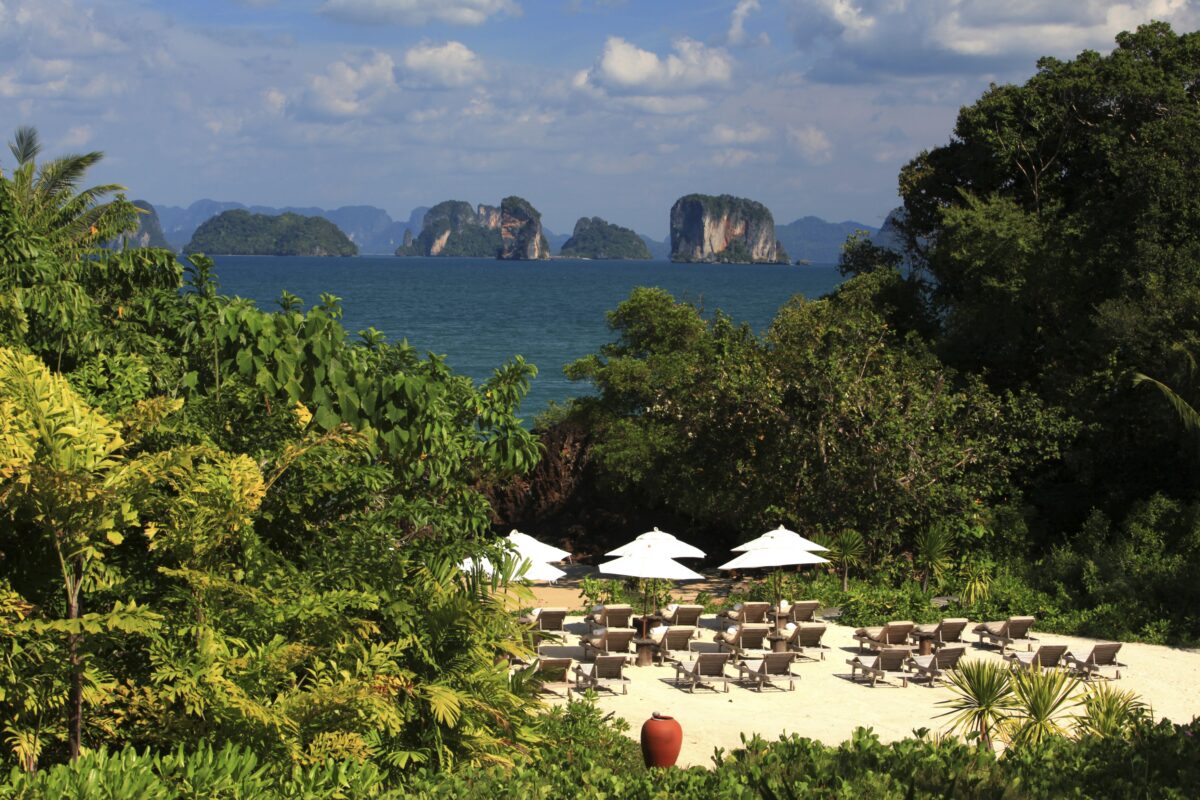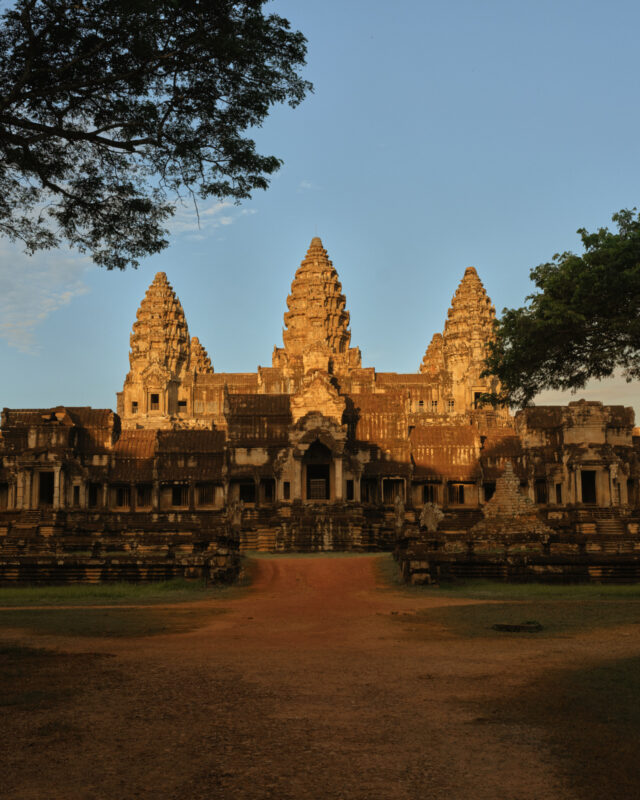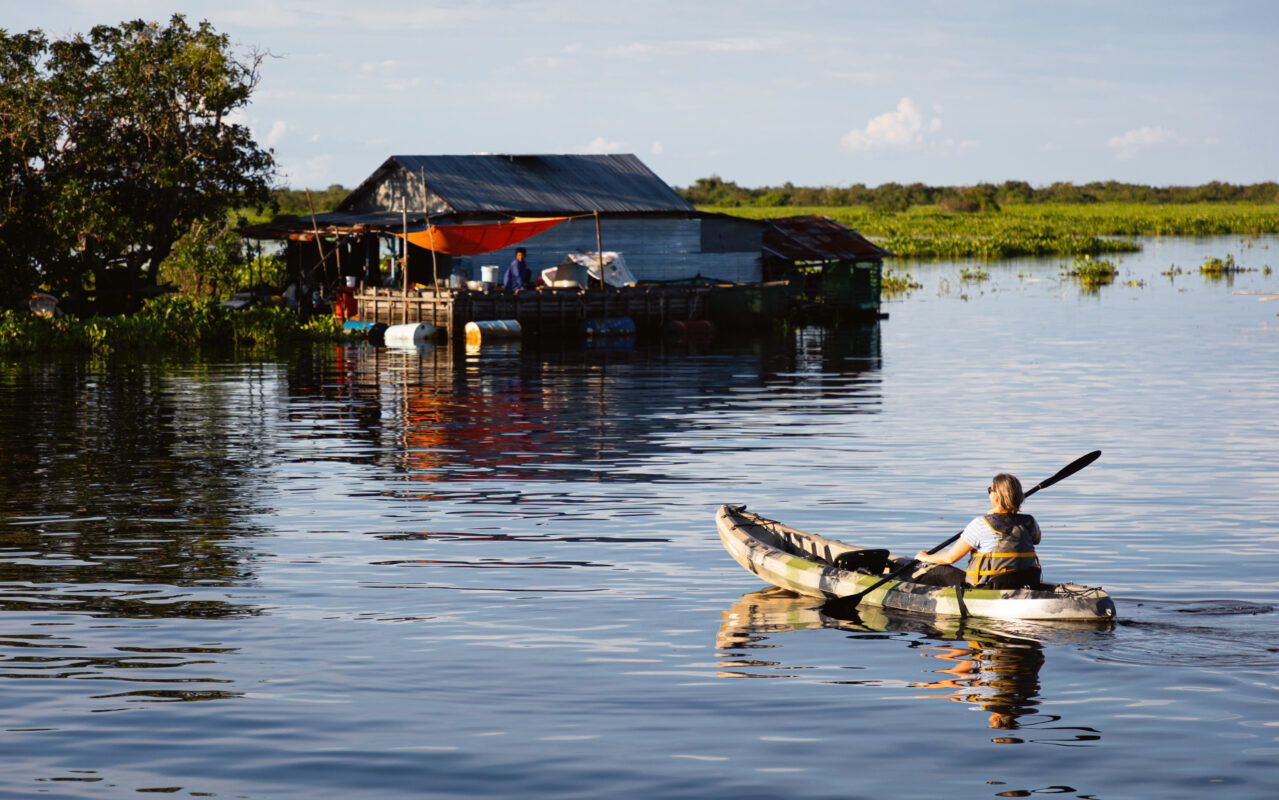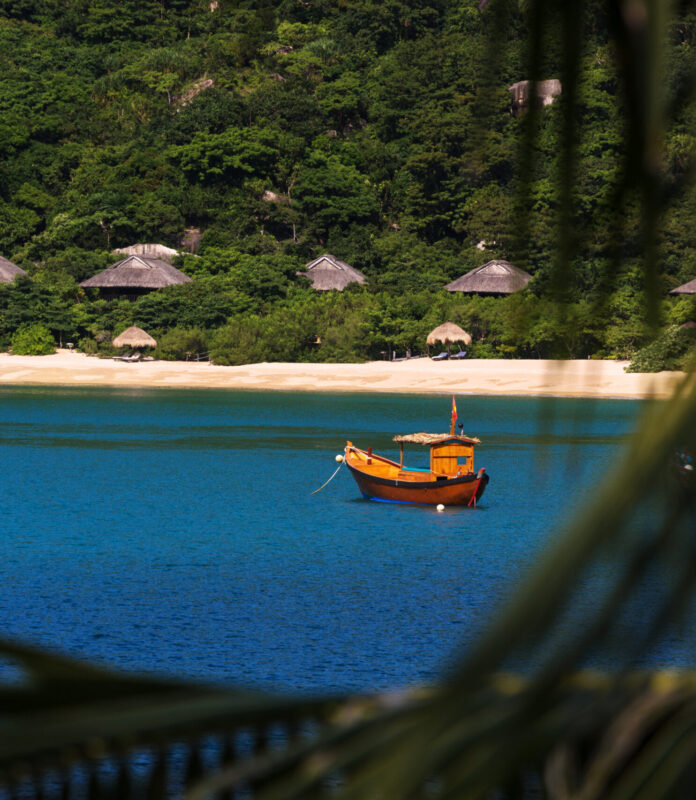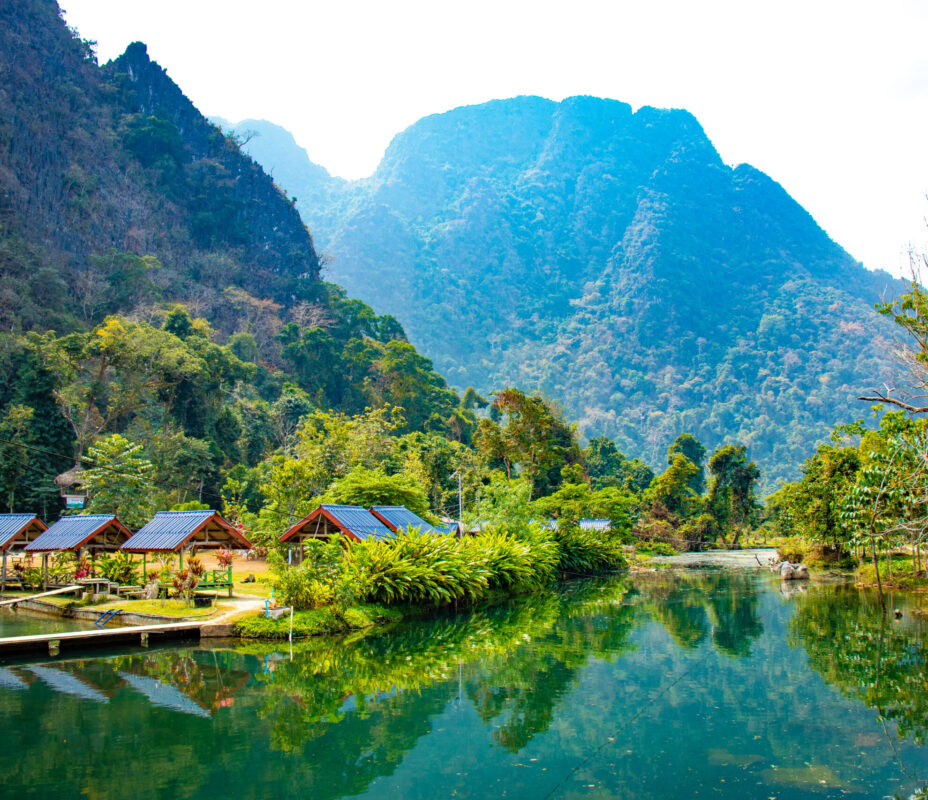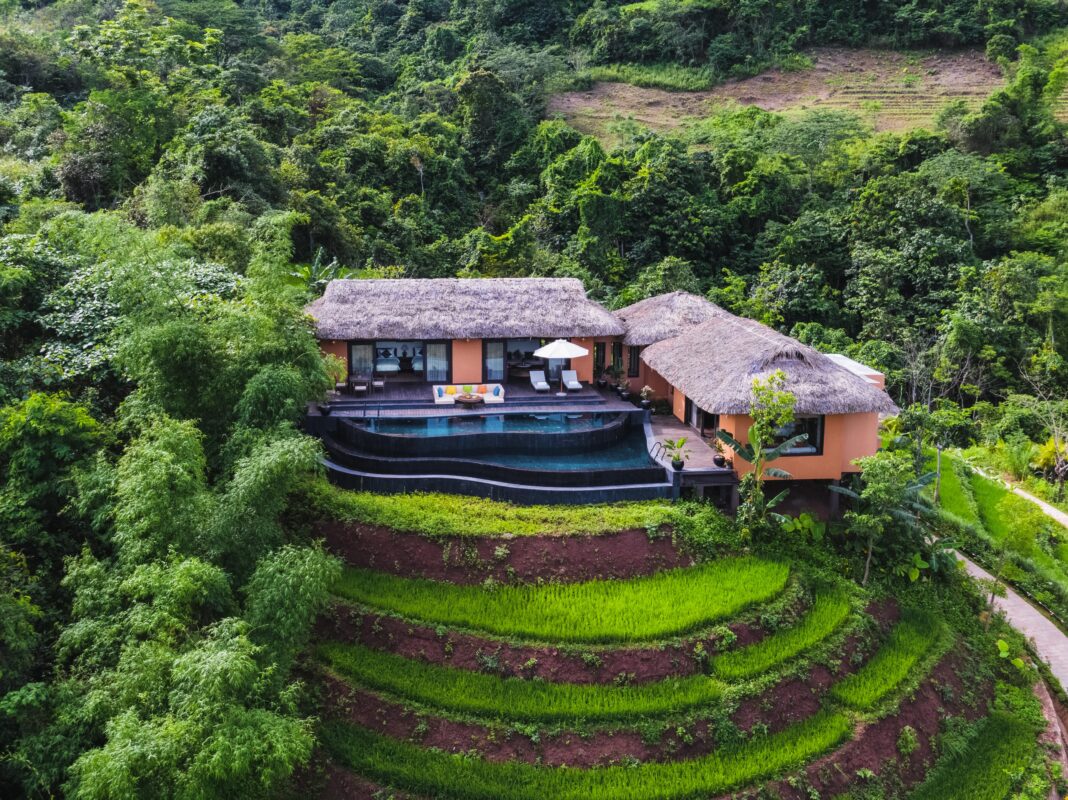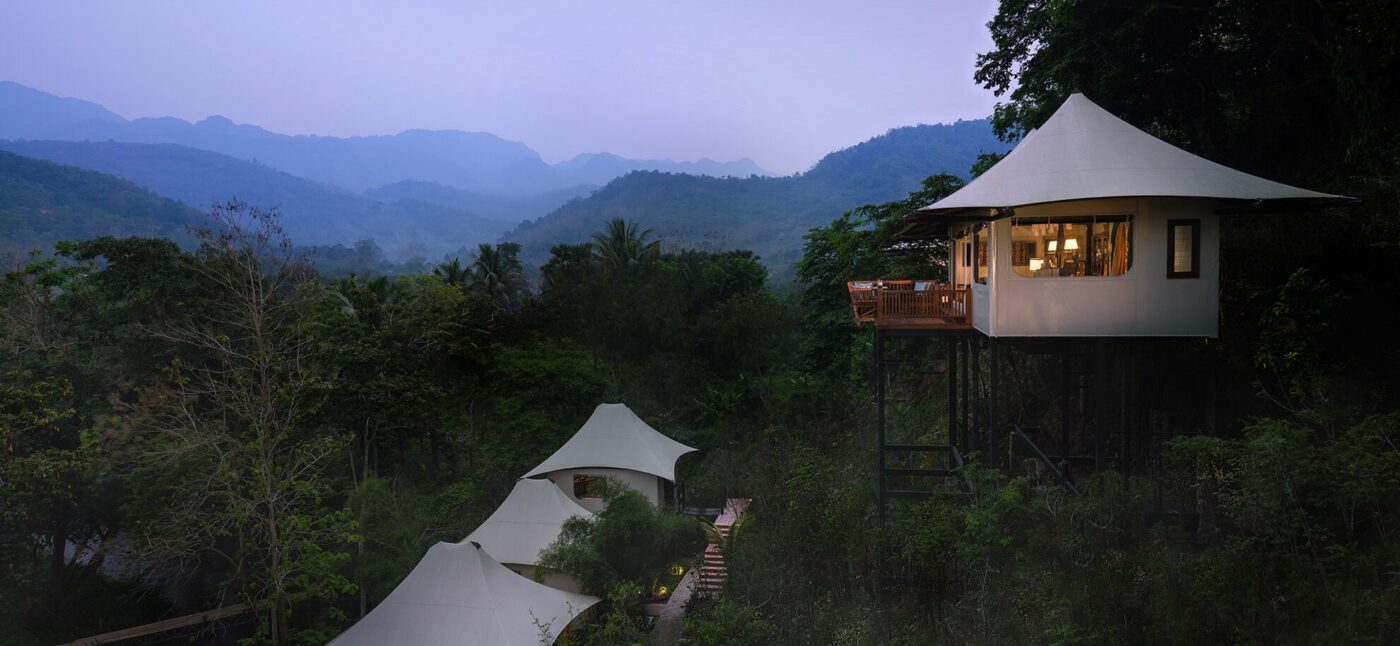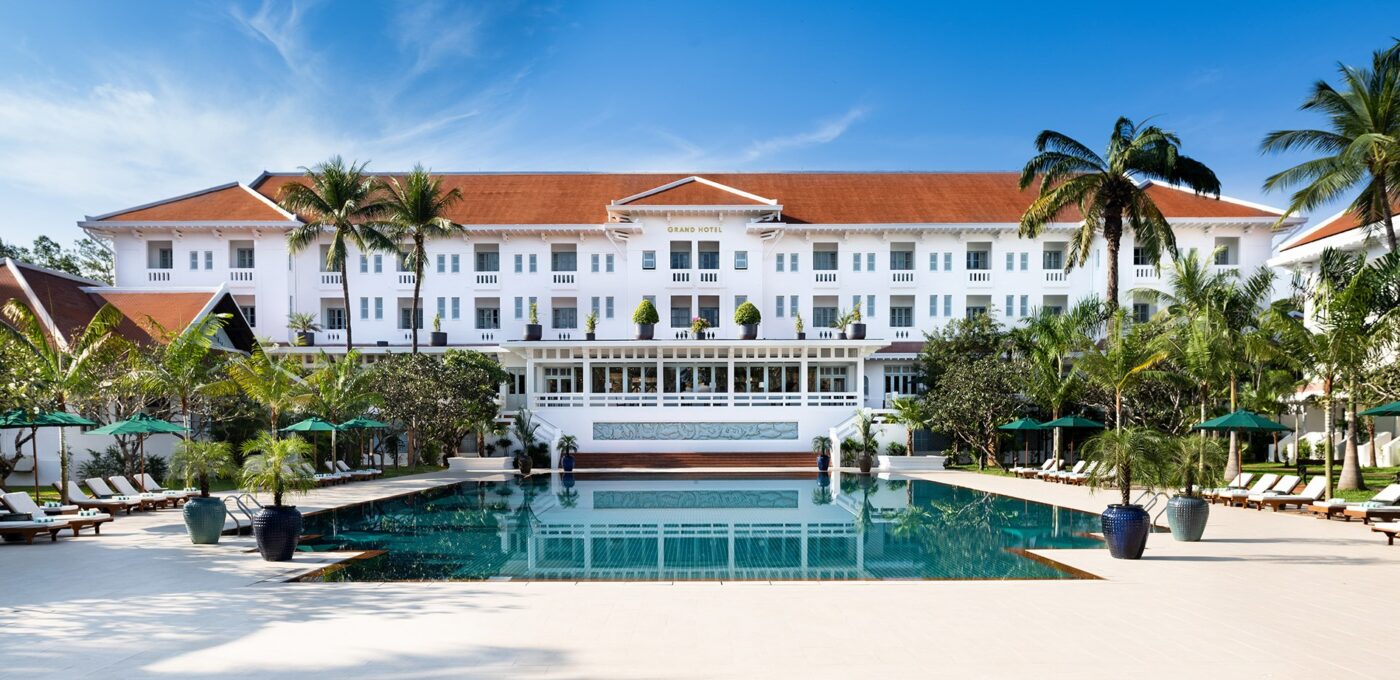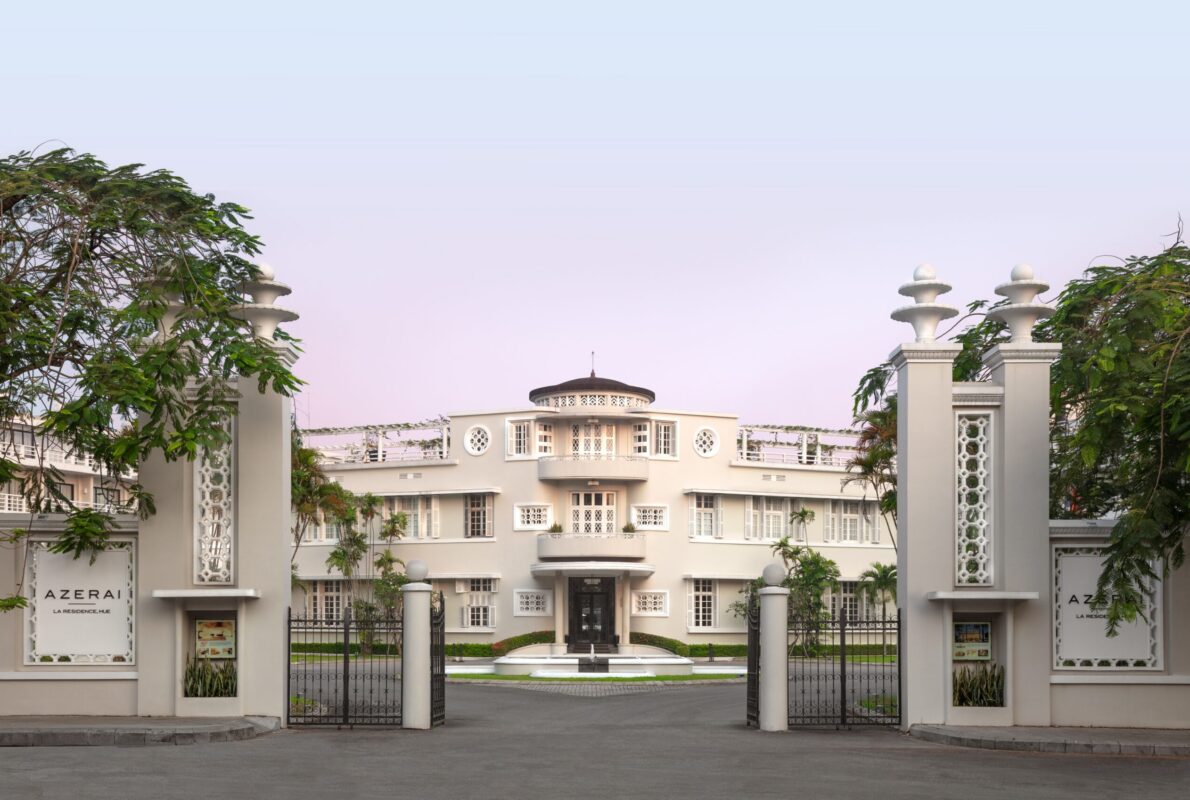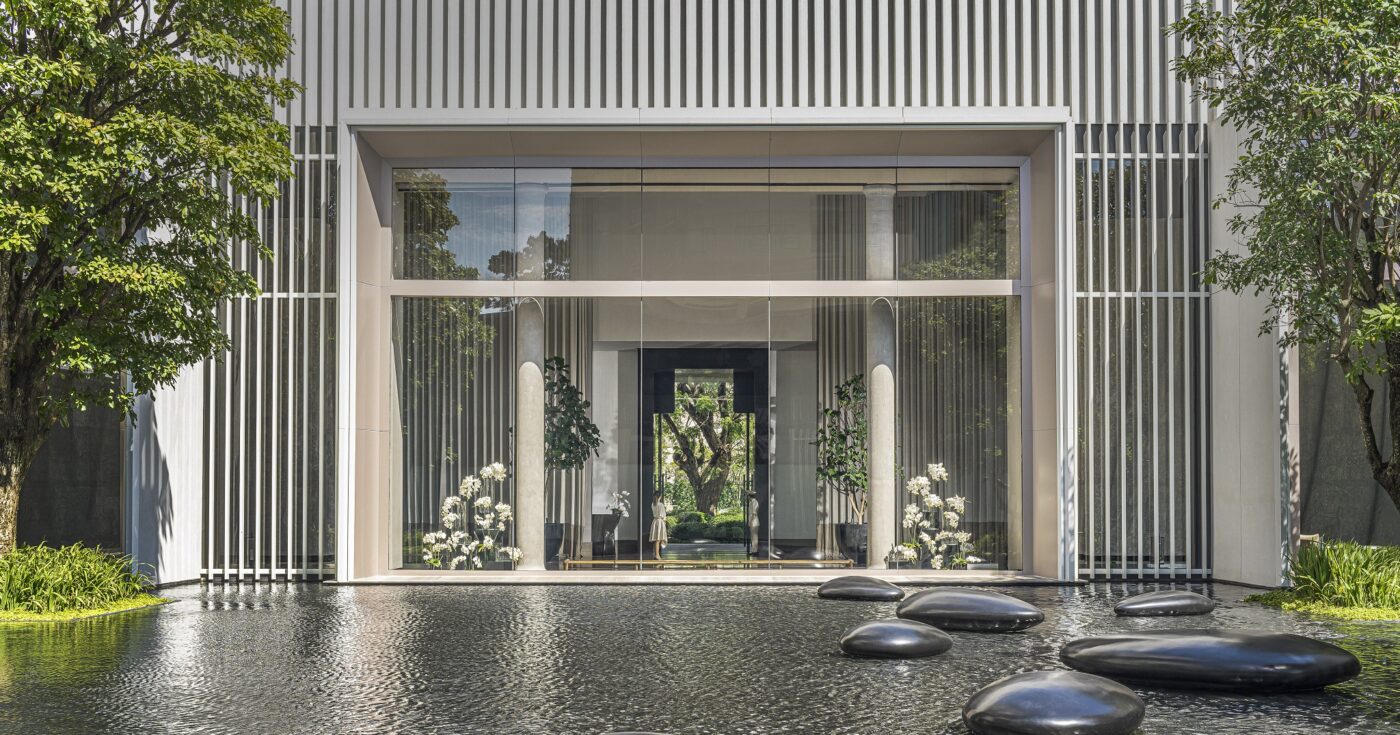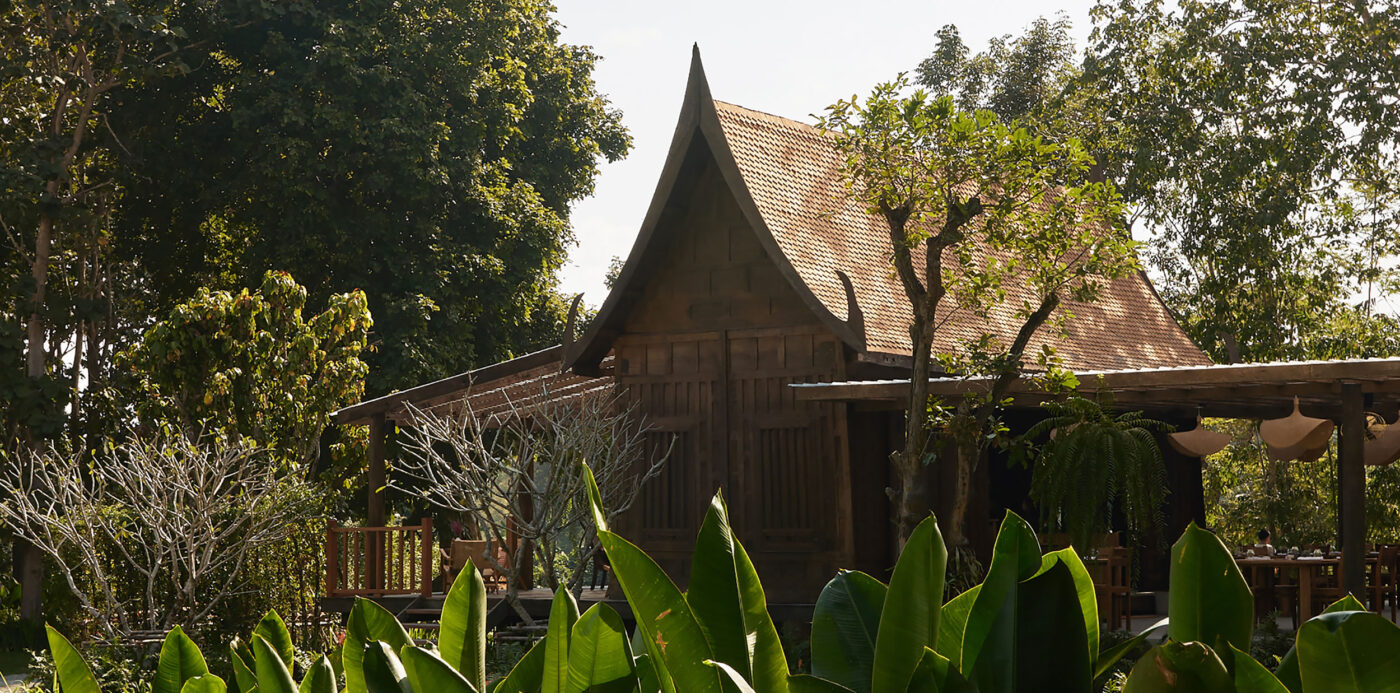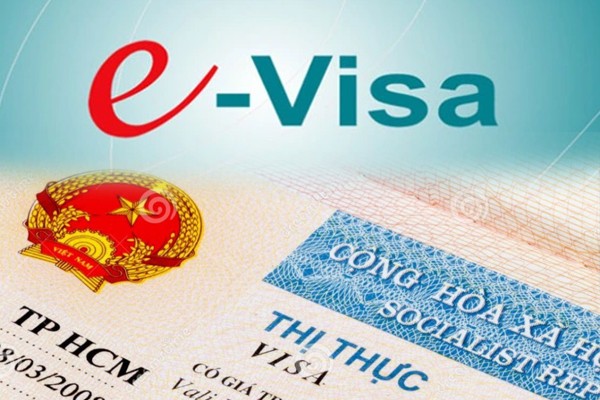VIENTIANE CAPITAL OVERVIEW
Located: a Central Province on a curve of the Mekong River
Total area: 3,920 square kilometers
Population: 840,940 (2024)
9 Districts: Chanthabouly, Sikhottabong, Xaysettha, Sisattanak, Naxaithong, Xaythany, Hadxaifong, Sangthong & Pak Ngum
Capital of the province: Vientiane

- Capital of Laos
- Many temples & monuments
- Cosmopolitan city life
- Handicraft markets
Located on a curve of the Mekong River, Vientiane Capital has a recorded history that stretches back to around 1,000 AD. The area was originally settled because of the fertility of the surrounding alluvial plains, and Vientiane became the capital city of Laos around the mid-16th century.
Vientiane Capital is the home to the most significant national monument in Laos: That Luang (Great Stupa), which is the symbol of Lao and an icon of Buddhism in Laos. Of the many beautiful Wats in Vientiane, a visit to Wat Sisaket is a must; built in 1818, this is one of the oldest temples in Vientiane. Other Buddhist holy places are Wat Ong Teu Mahavihan, known for its 16th century bronze Buddha sheltered by a carved wooden masterpiece, and Wat Si Muang, the site of the Lak Meuang or pillar-stone of Vientiane. Wat Si Meuang is also home to the guardian spirit of the city. Hor Phakeo, across the street from Wat Sisaket houses a beautiful collection of Buddha statues, including traditional Lao style of the “Calling for Rain” and “Offering Protection”. Spend a morning in the Lao National Museum, which displays an interesting mixture of revolutionary and contemporary exhibitions. The main sights in Vientiane are only a short walk or bicycle ride from most hotels. Wat Xieng Khouan, better known as the Buddha Park should not be missed: take a tuk-tuk to this unique park that includes Buddhist and Hindu. Shopping for handicrafts is easy in Vientiane Capital; visit Talat Sao (morning market) for a wide range of colourful textiles including silks, wall-hangings and other decorative pieces. For very fine handicrafts, try one of the many upscale galleries in the city center. Keep your eyes open for traditional wood carvings, mulberry paper and a variety of basketry made from bamboo and rattan.
In the old part of Vientiane city, an attractive and interesting settlement is situated along the Mekong River where the ancient temples, museums, monuments and parks are all located just a short distance apart.
The cosmopolitan capital of Laos, Vientiane, has galleries, boutiques, theatres, nightclubs and internet cafe, making it a major attraction for visitors from all around the globe. Although the city is small, it offers visitors a great variety of restaurants serving both Lao and foreign cuisine. When you get hungry try the nation’s signature dish, tam mak-hung (spicy green papaya salad), laap (spicy minced meat salad) and ping kai (fried chicken). Quench your thirst with a refreshing Beer Lao or fresh fruit shake from one of the many small restaurants found along almost every street in town. At dusk, find a spot along the Mekong promenade to enjoy an amazing view of the sunset over the river.
The largest fair, Boun Pha That Luang, is held in Vientiane Capital around mid-November each year. Celebrations begin at Wat Si Muang followed by a procession to That Luang. Festivities last a full week, ending in fireworks on the last night, which coincides with the full moon. In mid-October, the riverbank overflows with spectators watching the annual boat races. Boun Ok Phansa or the last day of Buddhist Lent precedes the boat races by one day. In the evening of Boun Ok Phansa, Lao people prepare small banana leaf boats called heua fai and set them afloat on the Mekong illuminated by candles and incense in a charming ceremony meant to bring good luck and prosperity.
TOURIST DESTINATION
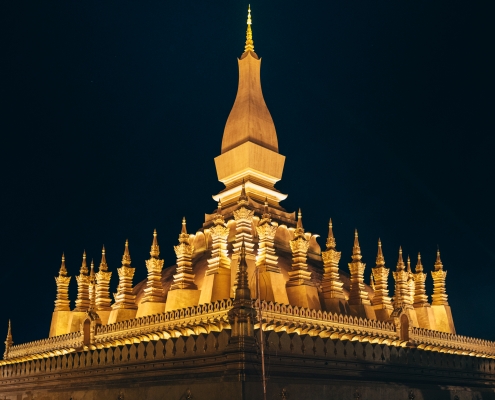
THAT LUANG STUPA (Great Sacred Stupa)
The site of That Luang has been builtin use since the year 236 of the Buddhist Calendar (307BC). When the first governor of Vientiane, Phaya Chanthabouri Pasitthisack or Bourichan built a structure that looked like a kiln of about 9 meters high and 10 meters wide. The original stupa was built on the site in 1566 by King Saysetthathirath, and was restored in 1953. The golden stupa is 45 meters tall and is believed to contain a relic of the Lord Buddha. The gold centerpiece of this stupa echoes the curve of an elongated Lotus bud. Today it is the most important national cultural monument.
Time: 08:00-12:00, 13:00-16:00, Open: Tuesday-Sunday (except Monday), Time: 08:00-12:00, 13:00-16:00, Open: Tuesday-Sunday (except Monday), Admission Fee: 30,000kip/person
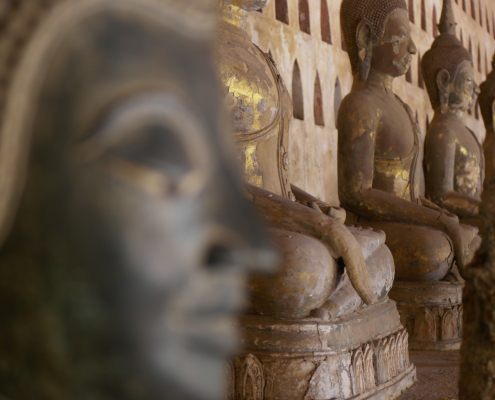
SISAKET TEMPLE
Sisaket is the only ancient templeremaining intact after the destruction of the Siamese in 1828. It’s located in the center of the old city,where it was built in 1818 by King Anouvong. The old monastery stands intact in its original form and certainly is one of the most interesting in the country. Inside the main hall, the courtyard walls house hundreds of little inches and shelves containing a total of 6,840 Buddha images.
Time: 08:00-12:00, 13:00-17:00, Open: Monday-Sunday (closed public holidays), Admission Fee: 30,000kip/person
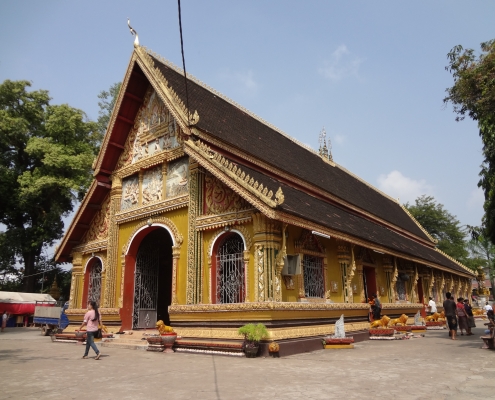
SIMUANG TEMPLE
Simuang Temple is one of Vientiane’s mostpopular sites of worship, and offers a fascinating insight into how old animist beliefs have blended seamlessly with Theravada Buddhism. The original city pillar of Vientiane is found in Wat Simuang located in Ban Simuang village along Setthathirath Road. It was built in 1956 and is believed to be guarded by the spirit of a local girl called “ Si ” Local legend has it that Nang Si, who was pregnant at the time, leapt to her death as a sacrifice, just as the pillar was being lowered into the hole. A very colorful Phasat Pheung (wax pavilion procession) attracts large crowds to Simuang Temple, taking place just two days prior to the That Luang Festival in November. On a daily basis, Wat Si Muang attracts crowds of local Buddhists who want to benefit from its ‘good luck’ powers. It is commonly thought that if you pray for something here and simultaneously make a promise, your wish will be granted, providing you return and fulfill your promise.
Open: Monday-Sunday, Time: 7:00am – 8:00pm.
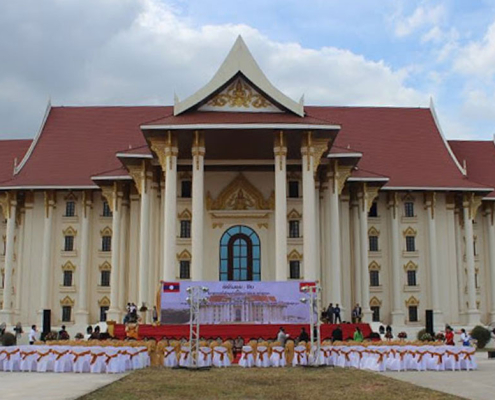
LAO NATIONAL MUSEUM
The building, typical of French colonial architecture, was built in 1925. It was the place where independent was declared in 1945. since then, the building has been extended and used for various purposes, including the headquarters of Laos government, housing the King when visiting from Luang Prabang, and prime minister’s office until 1975, when the Laos people democratic republic was established. On December 1st, 1980, the building was converted into the Lao exhibition Hall of the revolution and in 1985 it was further upgraded to the Lao museum of the revolution. In early 2000 the building was newly opened as the Lao national museum, which now houses some 8.000 artifacts across the country. The museum’s collection continues to increase, representing paleontology, archaeology, history and ethnology. This charming French-era building, flanked by cherry blossom and magnolia trees, is due to be knocked down and moved to newer premises. Formerly known as the Lao Renolutionary Museum, much of its collection retains an unshakeable revolutionary zeal. Downstairs has a potted account of Khmer culture in the south, accompanied by tools and Buddha statuary; upstairs has ponderous displays that tell the story of the Pathet Lao, prepared with busts of Lenin and Ho Chi Minh.
Open: Monday-Sunday, Time: 08:00-12:00, 13:00-16:00, Admission Fee: 30,000kip/person
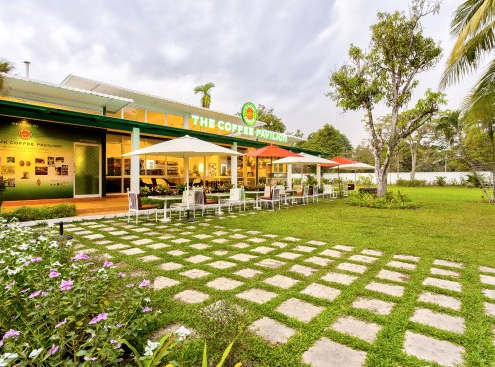
SINOUK COFFEE PAVILION
Located at the headquarters of Sinouk Coffee, one of Laos’ best known coffee planter and roaster, this place stand as a Coffee Learning House, unique in Laos. You will learn about the History of Coffee in the Coffee Gallery, including Planting and harvesting process. Watch a live roasting, and experience a cupping session to identify flavors and aroma like a master. Regular cupping sessions are held on Saturdays and require prior registration, you can check on Facebook for detail (sinoukcoffeeofficial). To book private session, it is recommended to book at least 1 day in advance. Cost per person is 80 000 LAK for a two-hour session. Barista course are also available to beginner and intermediate, for half day or 2 days. You will learn how to prepare latte art, and understand a coffee shop environment. Onsite, there is also a Coffee Shop, Café Sinouk, where you can enjoy coffee and food. That makes a good stop on the way to or back from Xieng Khuan (Buddha Park) if you have your own wheels. It is sign posted just past the US Embassy when traveling towards the Friendship Bridge from Vientiane. For reservation or additional detail, please contact: [email protected], Phone: (+856-20) 58392364.
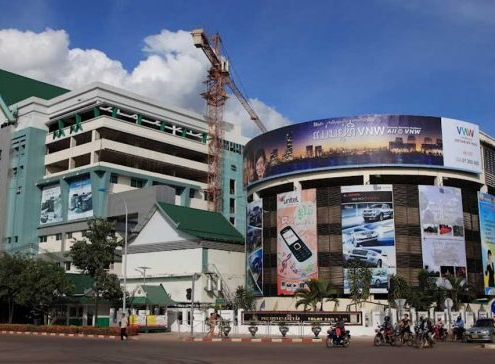
TA LAT SAO (Morning Market)
Located on Lane Xang Avenue, the Morning Market consists of 3 main buildings each with 2 floors. This lively shopping market has become the commercial center of Vientiane. A large variety of goods are sold including Lao Antiques, textiles, souvenirs, handicrafts, jewelry, and products imported from abroad.
Open daily from 7:00am-5:00pm.
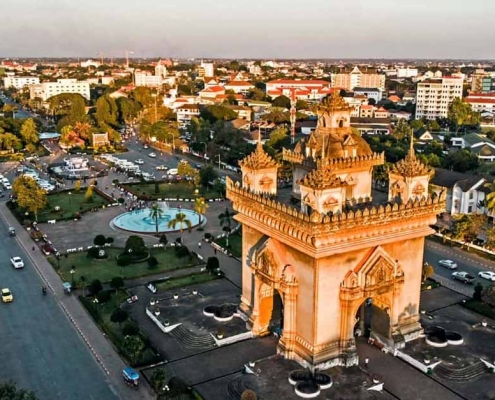
PATUXAY (Victory Monument)
The memorial monument, Patuxay, was built in 1957 and is perhaps the most prominent landmark in the city. It is situated on Lanexang Avenue. While the arc de Triomphe in Paris inspired the architecture, the design incorporates typical Lao motifs including “Kinnaly”, a mythical bird woman. Energetic visitors can climb to the top of the monument, which reveals an excellent panoramic view of the city.
Open daily from 08:00 am to 17:00 pm, Admission Fee: 30,000kip/person
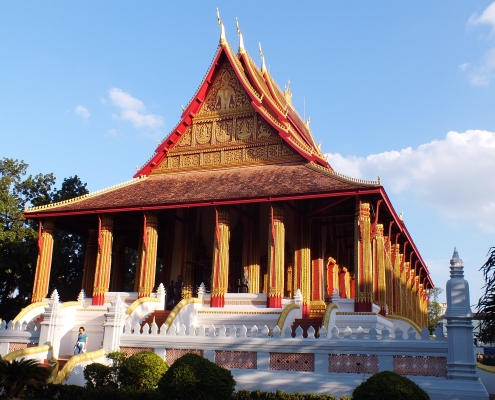
HOR PHRA KEO MUSEUM
Originally, this ancient temple was built in 1565 by King Xayasetthathilath to house the Emerald Buddha 1565-1779 (lost to the Siamese in 1828) as his personal place of worship. It was reconstructed in 1936. For this reason and unlike other temples in Laos, monks have not taken up residence here. During the 1970’s, the temple was converted from a place of worship into museum and now houses the finest national collection of Buddhist sculptures and artifacts. From the terrace of HorPhra Keo, one can enjoy a view overlooking the president’s Palace (former Royal Palace) and garden.
Time: 08:00-12:00, 13:00-16:00, Open: Monday-Sunday, Admission Fee: 30,000kip/person
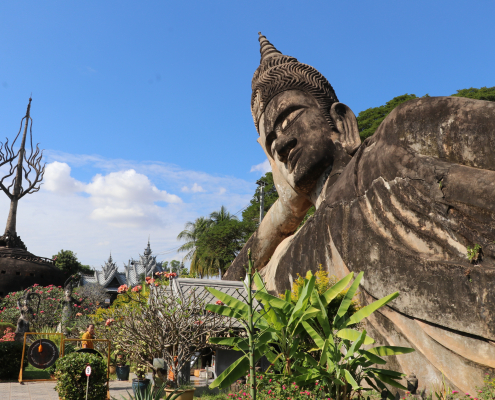
BUDDHA PARK (Xieng Khuan)
Buddha Park is a famous sculpture park with more than 200 religious statues including a huge 40-metre high reclining Buddha image. The best spot for photography here is on top of the giant pumpkin structure standing about three stories high. The entrance is crafted to look like a demon’s mouth (about three metres high) with a stone ladder inside leading to a bird’s eye view of the entire Xieng Kuan Park. It was built in 1958 by Luang Pu Bunleua Sulilat, a monk who studied both Buddhism and Hinduism. This explains why his park is full not only of Buddha images but also of Hindu gods as well as demons and animals from both beliefs. The most outstanding ones include Indra, the king of Hindu gods riding the three-headed elephant (aka Erawan and Airavata), a four-armed deity sitting on a horse and an artistic deity with 12 faces and many hands, each holding interesting objects. They are all equally impressive not only because of their enormous size but because they are full of interesting details and interesting motifs. There is a local eatery and café offering food and drinks to tourists at one end of the park right next to the Mekong River that makes a great spot to chill after all the walking and climbing. Among the popular snacks are papaya salad, fried bananas and cold Lao beer. It also has a souvenir shop and restrooms. There is a small fee for entering the park as well as for photography.
Open: Monday-Sunday, Time: 8:00am – 4:00pm, Admission Fee: 30,000kip/person
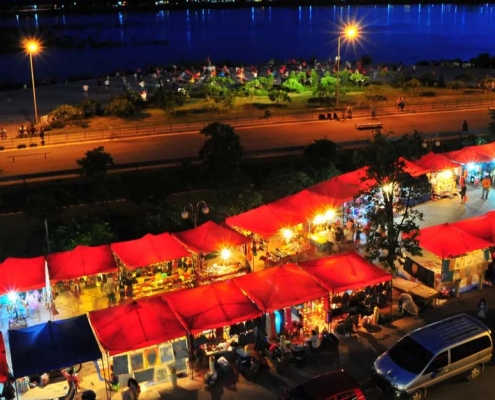
VIENTIANE NIGHT MARKET
Vientiane Night Market is aimed primarily towards tourists, with clean, orderly stalls, and all manner of merchandise that make great souvenirs or mementos. It all begins around sunset when a small army of sellers begin setting up their red-roofed stalls directly on the riverside promenade. You can’t fail to see it. The whole riverside area is alive at this time with joggers and dog-walkers taking advantage of the cooling breezes and stunning backdrop of the sun lazily sinking into the Mekong river. Products on offer are fairly typical of night markets throughout the region. You will find a predictable array of Buddhist-inspired paintings and knickknacks, cheap sunglasses, and Beer Lao T-shirts. The clothes stalls tend to be geared towards the backpacker market with fishermen pants and one-size-fits-all dresses and skirts. With only $US10 in your pocket you can pick up at least a couple of products here, but, for bargain hunters, it’s worth mentioning that everything on offer here can be found at a slightly cheaper price at other markets. The traders seem to have whittled down all the best-sellers from the Morning Market and set them up in more attractive, and convenient, surroundings.
Open daily from 5:00 pm – 10:00 pm
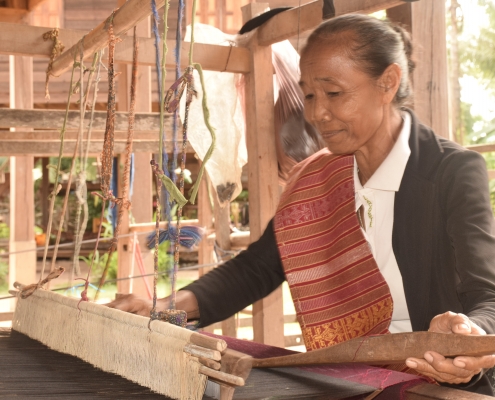
LAO TEXTILE MUSEUM
Lao is quite well known for its silk woven products. The country’s Silk fabric is appreciated for its exquisite beauty and fine workmanship. The technique used is sophisticated and potentially one of the most complex weaving techniques that exists. It requires as high level of perseverance and artistic talent to create exquisite fabrics, whose colors are natural products dyes. Weaving, as practiced by Lao people, depicts their way of life, their environment and spiritual beliefs and is thought by many to be an example of successful combination of the local knowledge and silk of the people of South East Asia. The curious mind may ask how Lao people used to produce silk fabrics, considered as masterpieces in their own right,hundreds of years before, at a time when commercial competition was not common. You can find answers to these questions and more at the Lao Textile Museum, Its a place worthwhile visiting. The Lao Textile Museum is the first private museum in Laos. On display are antique pieces of silk made by difference ethnic group of the country. Visitors can also see ancient household untensils. The Exhibition is display in wooden house of typical Lao style, amidst peaceful and pleasant surrounding and gardens of flowers.
Address: 151, Nongthatai Village, Chanthaboury District, Vientiane Capital; Open daily from 09:00am-16:00pm.
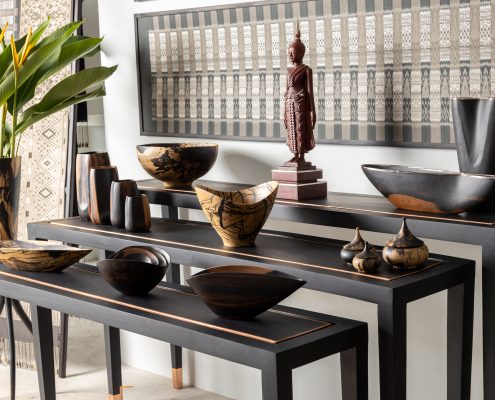
CARUSO CREATIONS VIENTIANE
A visit to the Caruso workshop in Vientiane is a plunge into a wonderful world. Designers and craftsmen will show you the different stages of production of the most authentic Laotian know-how, silversmiths, sculptors, turners at the service of absolute beauty. The tour ends in the showroom, where the entire Caruso universe is represented: ebony vases, jewelry, carpets and the finest silks find their place in a traditional contemporary setting. Take advantage of Caruso’s chauffeur service to get to the workshop.
Address: Nongbouathong Neua, Homp 14, Unit 49, Vientiane
